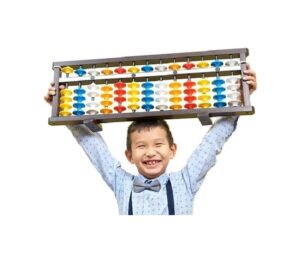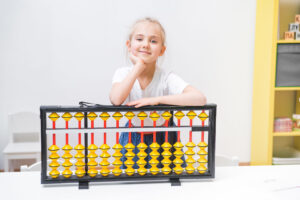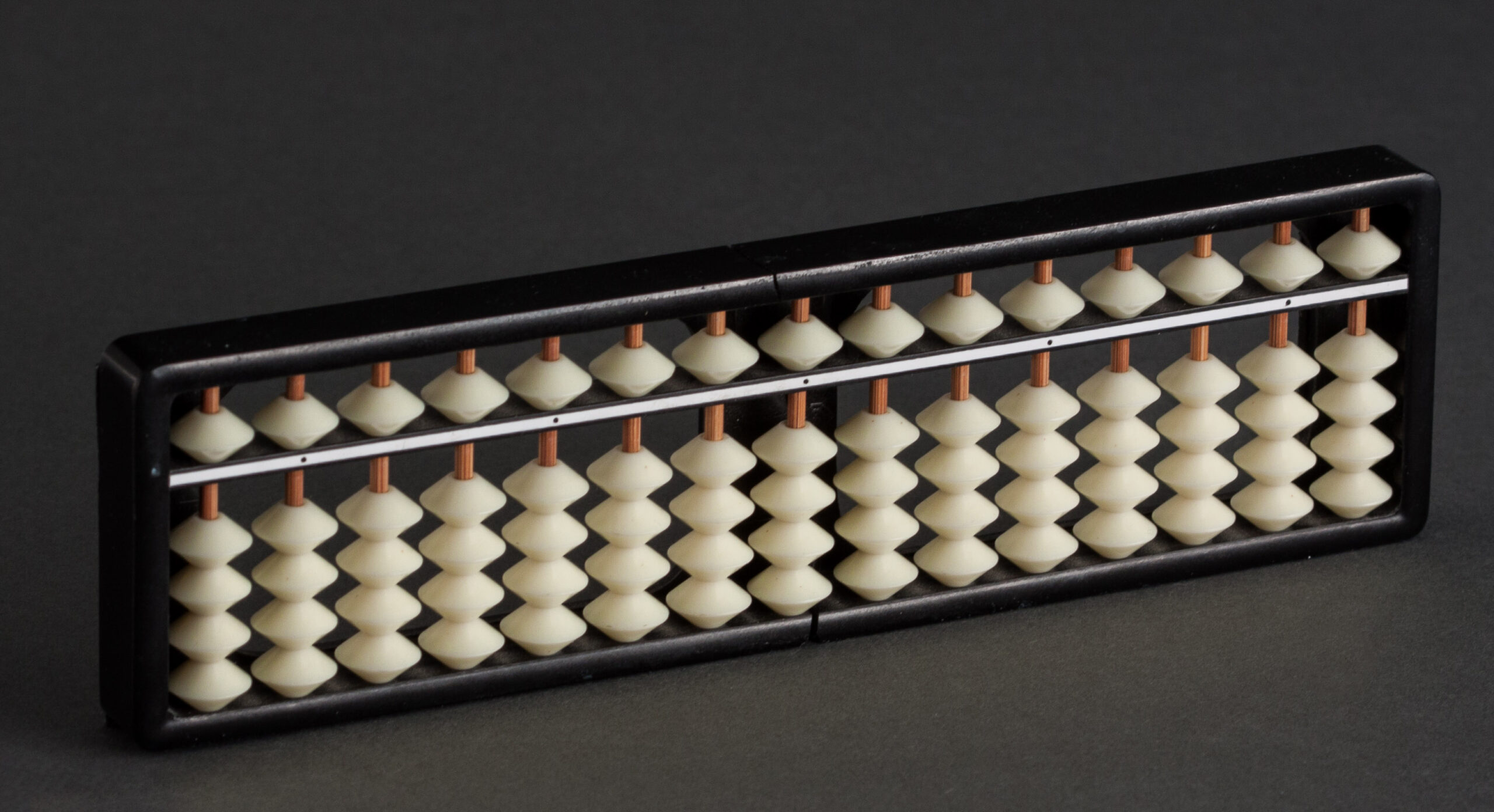An abacus is quite unknown in our country, but in other countries it is often used as a calculation aid. How to use an abacus?
The abacus is a tool for performing various calculations, which is still used today in some countries instead of a calculator. It consists of metal rods arranged horizontally or vertically, on which wooden beads are placed. The wooden beads can be moved on the rods. Each arrangement of wooden beads corresponds to a number.
There are different versions of an abacus depending on the country. In China the abacus is called “suan pan”, in Russia “stschoty”, in Japan “soroban”. The counting systems for calculating with the abacus differ: https://argoprep.com/blog/k8/abacus/.
In the simplest case, an abacus has 10 beads per bar (row). A simple method of calculating with the abacus is to assign different values to the beads in each row.
The beads in the first row have the value “1”, those in the second row have the value “10”, those in the third row have the value “100”, and so on. If you want to add two numbers, you move the corresponding beads starting with the highest value.
A simple example: 43 + 56 = ?
Adding “43” and “56” requires first moving 4 beads to row 2 (row 2 are the tens, of which we have 4 in this example) and then moving 3 beads to row 1 (row 1 are the ones, of which we have 3). To add up the “56”, 5 beads are added to row 2 (there are 5 tens) and 6 beads are added to row 1 (there are 6 ones). When a row is full, it is moved back completely (it is “deleted”), and in the next row one bead is moved for it (this is then a “carryover”). In our example we have in row 2 a total of 9 beads (=90) and in row 1 also 9 beads (=9), so the result is 99.
Another example: 99 + 5 = ?
To the “99” obtained in the 1st example we want to add the “5”. So on row 2 (the tens) 9 beads must be shifted, on row 1 (the ones) also 9 beads must be already shifted (that is the 99). To add the “5”, we move 1 bead to row 1, which is already full. (We note that 4 of the 5 are still missing!).

The whole row 1 is moved back, but in row 2 (the tens) 1 bead is moved. 10 beads of ones became 1 bead of tens! But now row 2 has also been filled, there were already 9 beads, now there are 10. Row 2 is also pushed back completely, but in row 3 (the hundreds) exactly 1 bead is moved. Now we move the missing 4 units in row 1 (which we remembered). So we have: 1 bead in row 3 (=100), 0 beads in row 2 (=0) and 4 beads in row 1 (=4), the result is
104.
What sounds very simple here can quickly become a real relief when calculating with many numbers. In particular, intermediate results cannot be lost, since they are recorded as beads on rods like in an electronic memory.
The abacus requires a little practice, but it is quite a fast tool and was used in the retail trade in Russia, for example, just a few years ago to calculate prices in a matter of seconds. All other basic arithmetic operations are also possible with an abacus.
